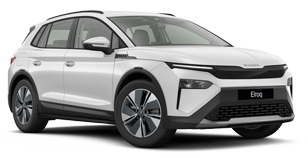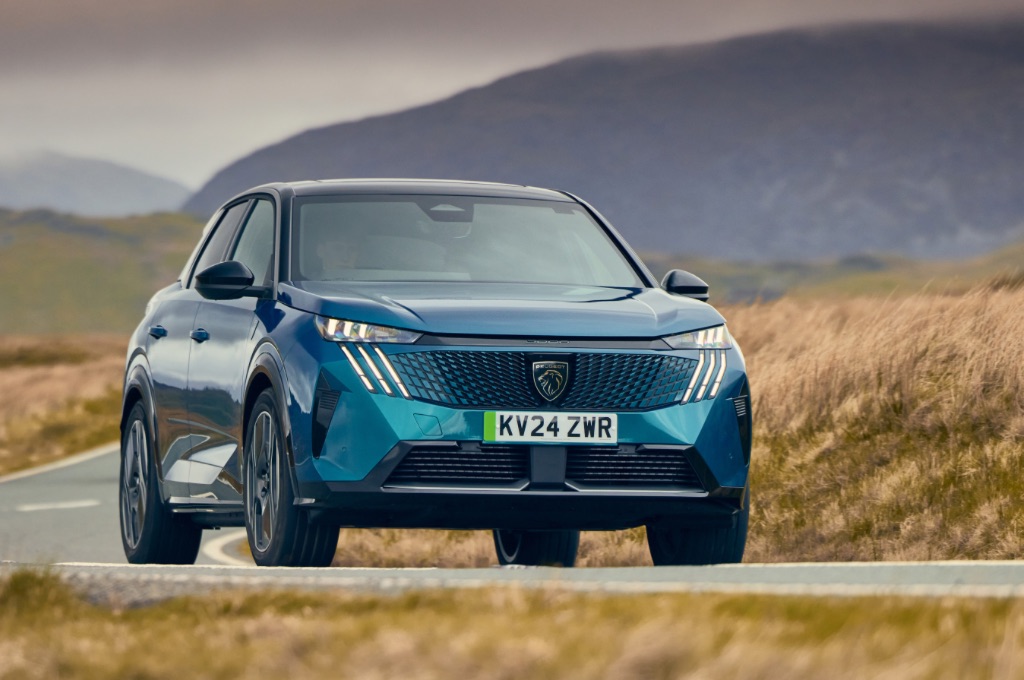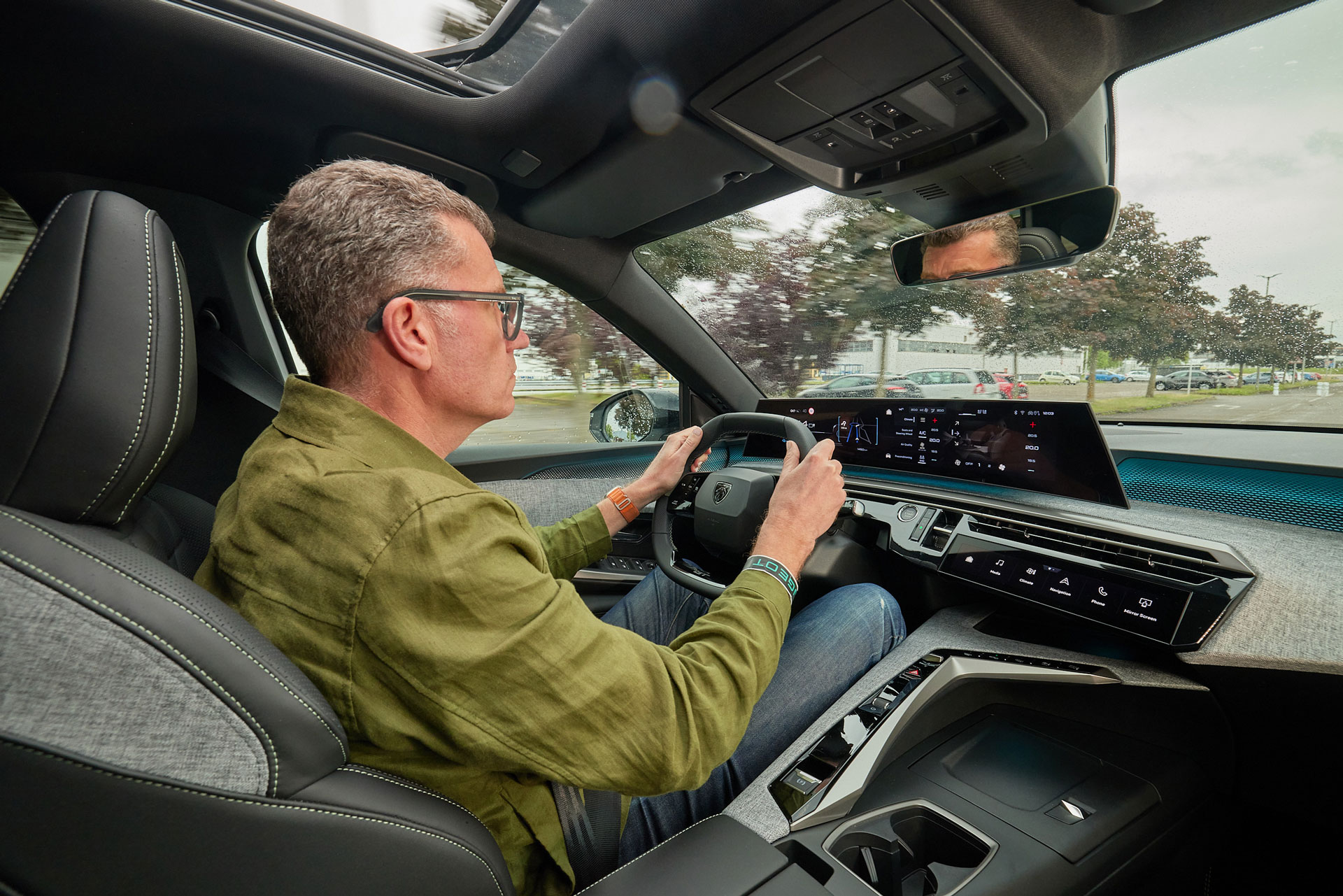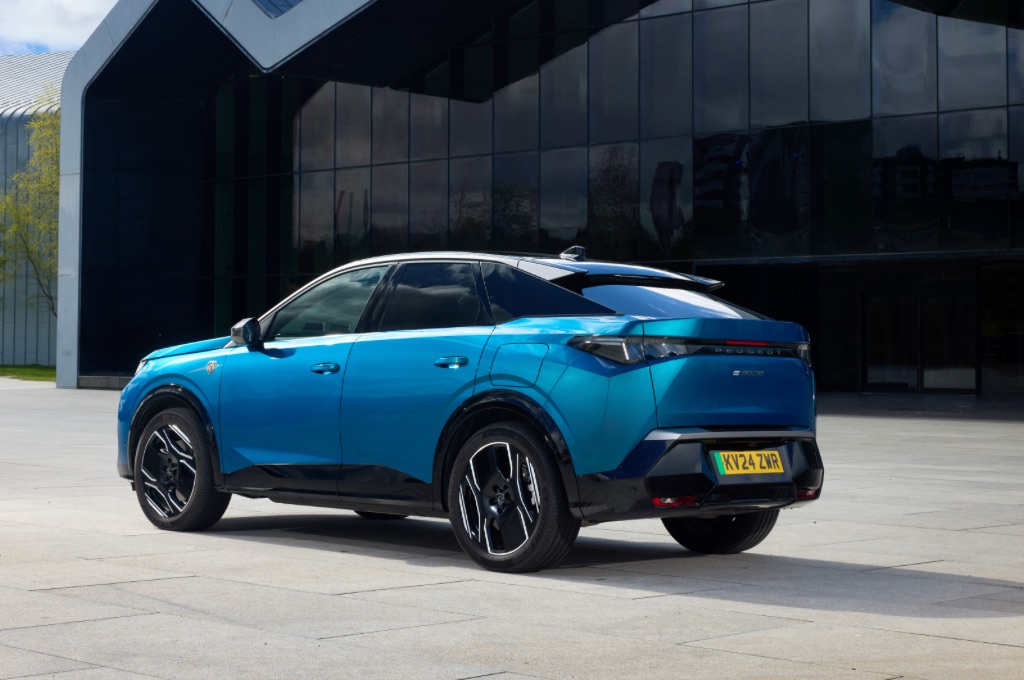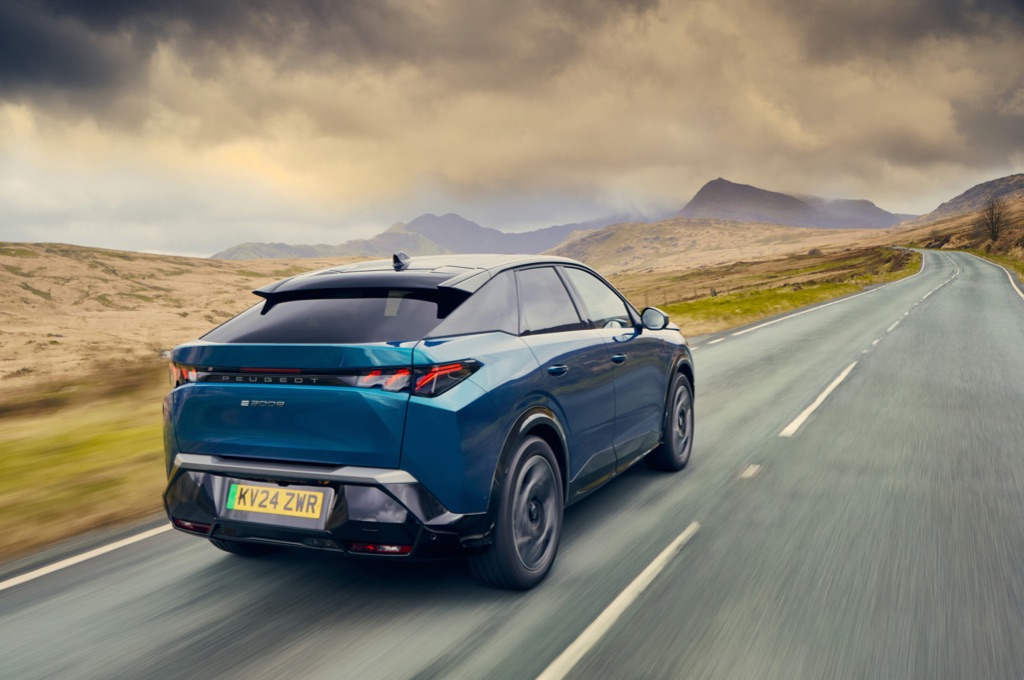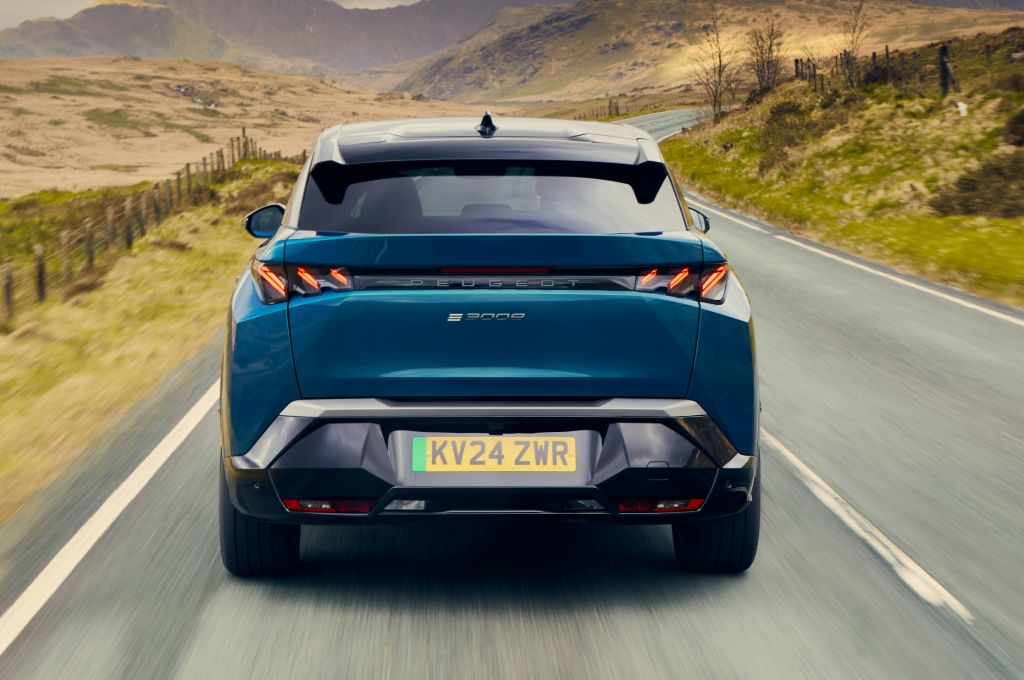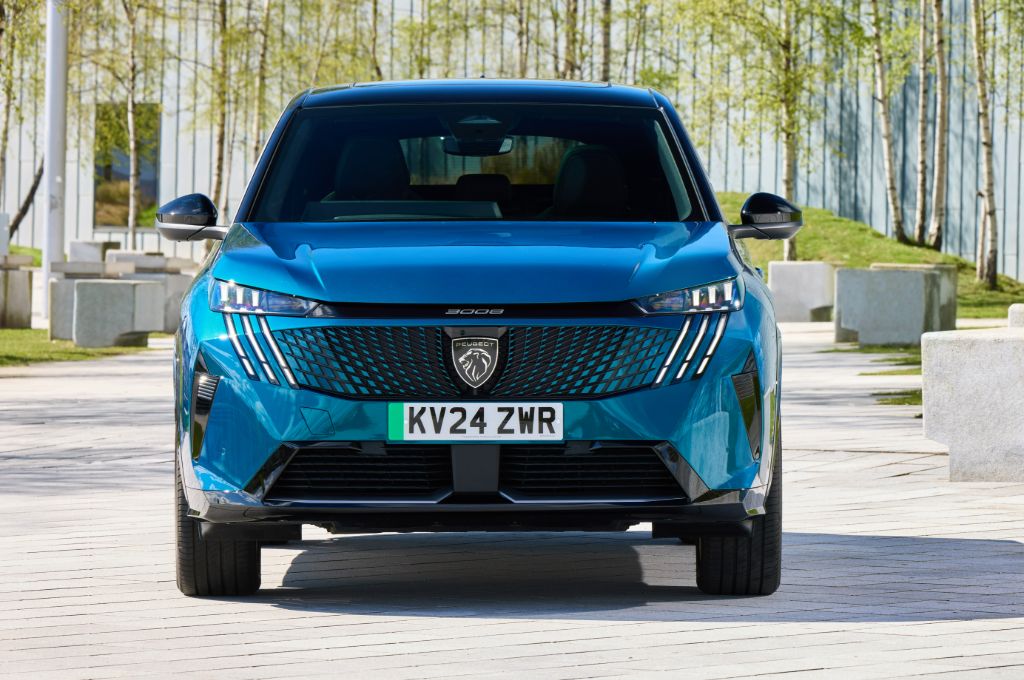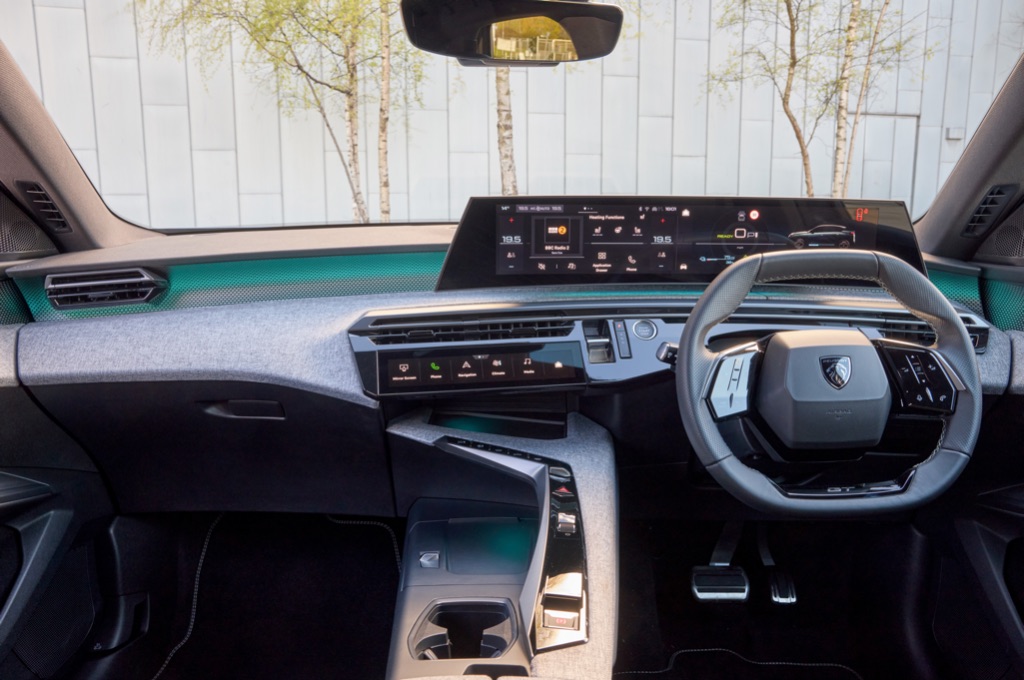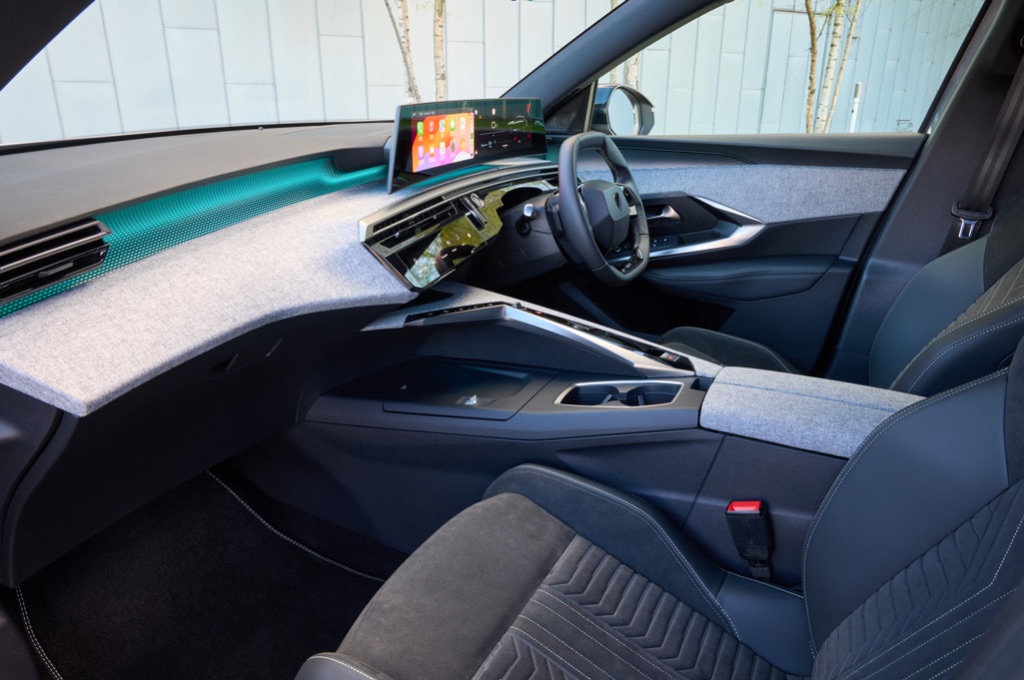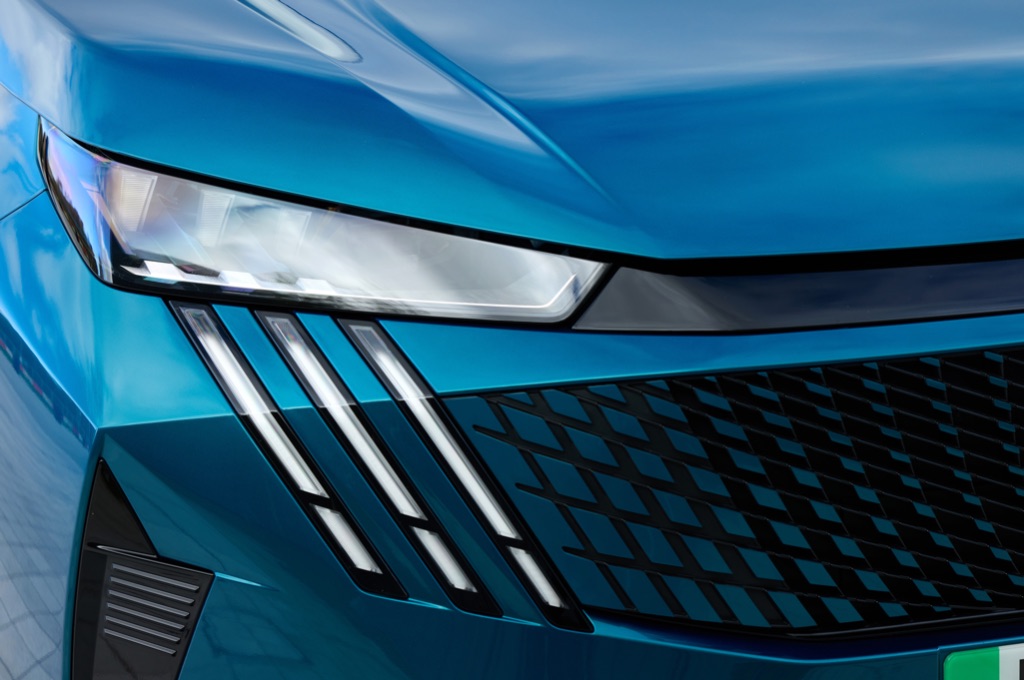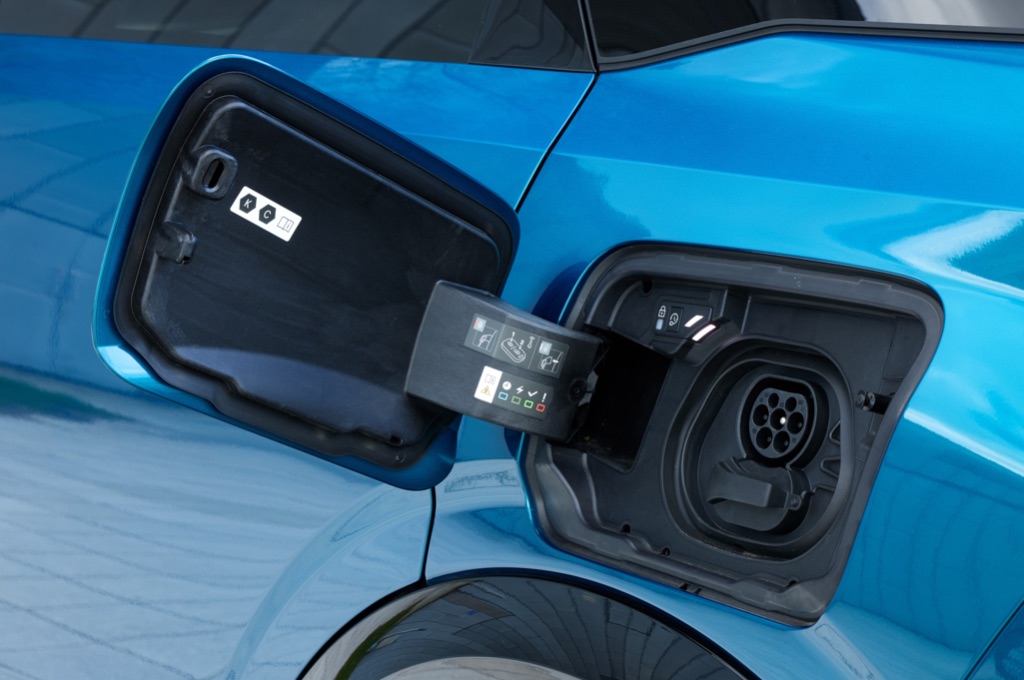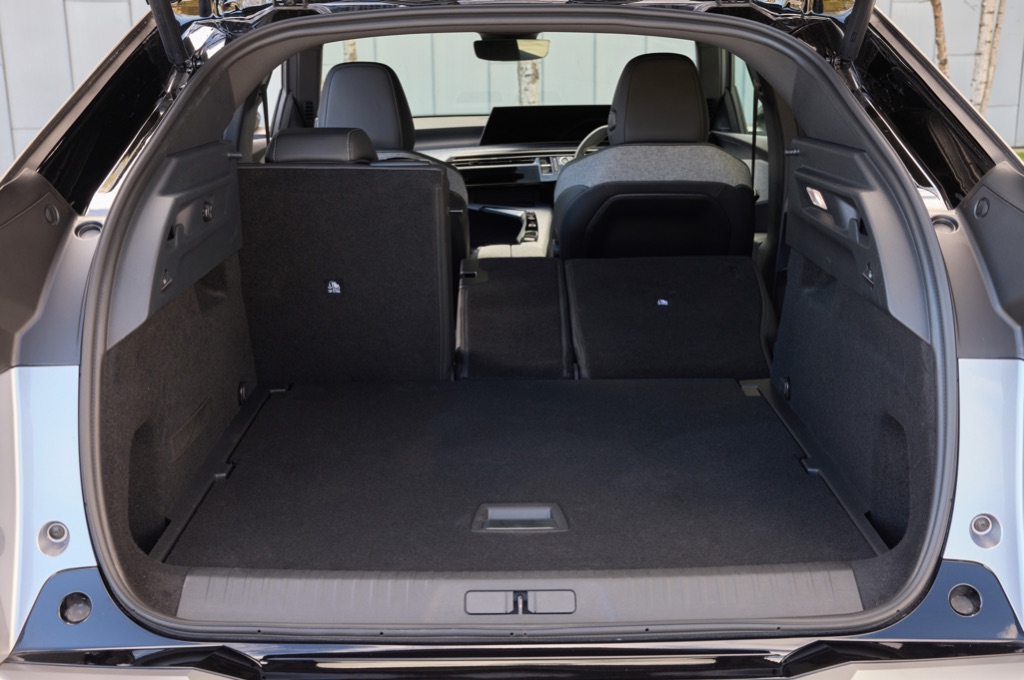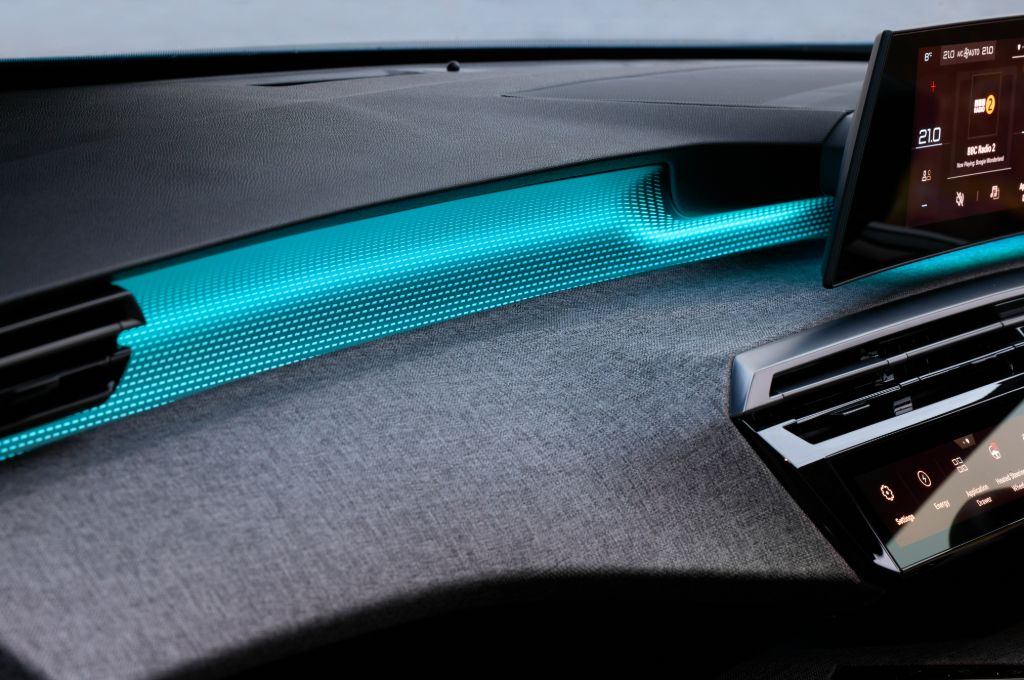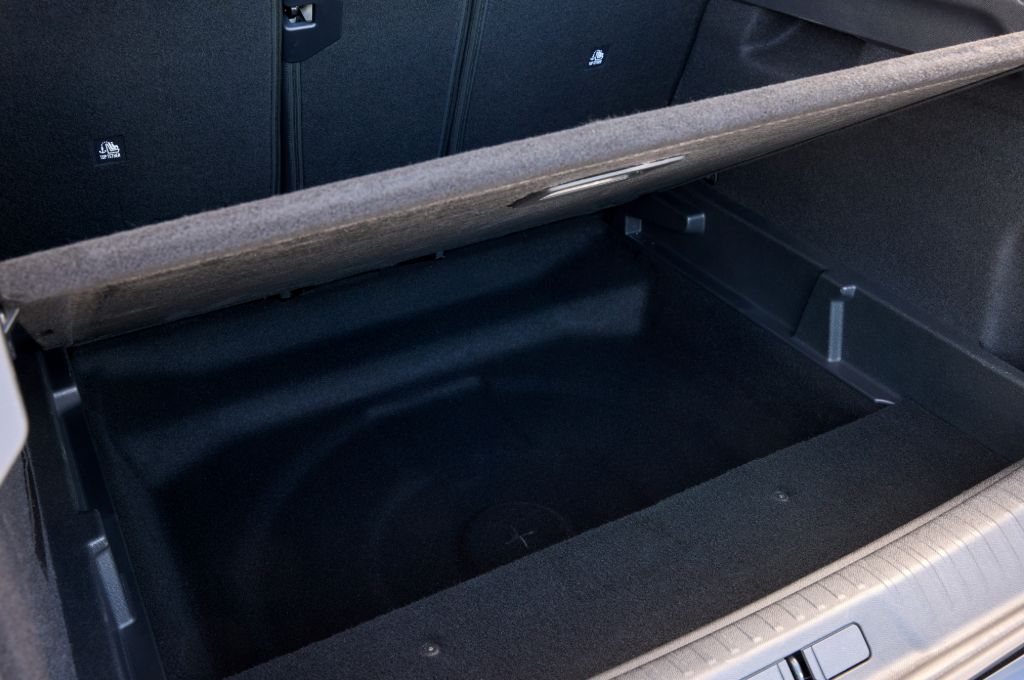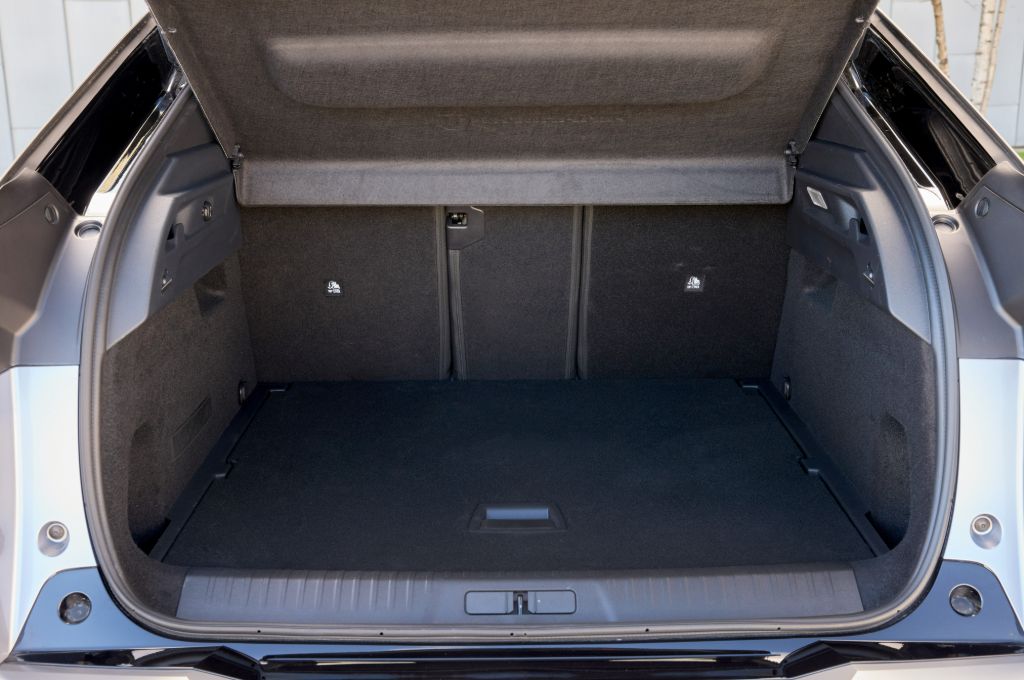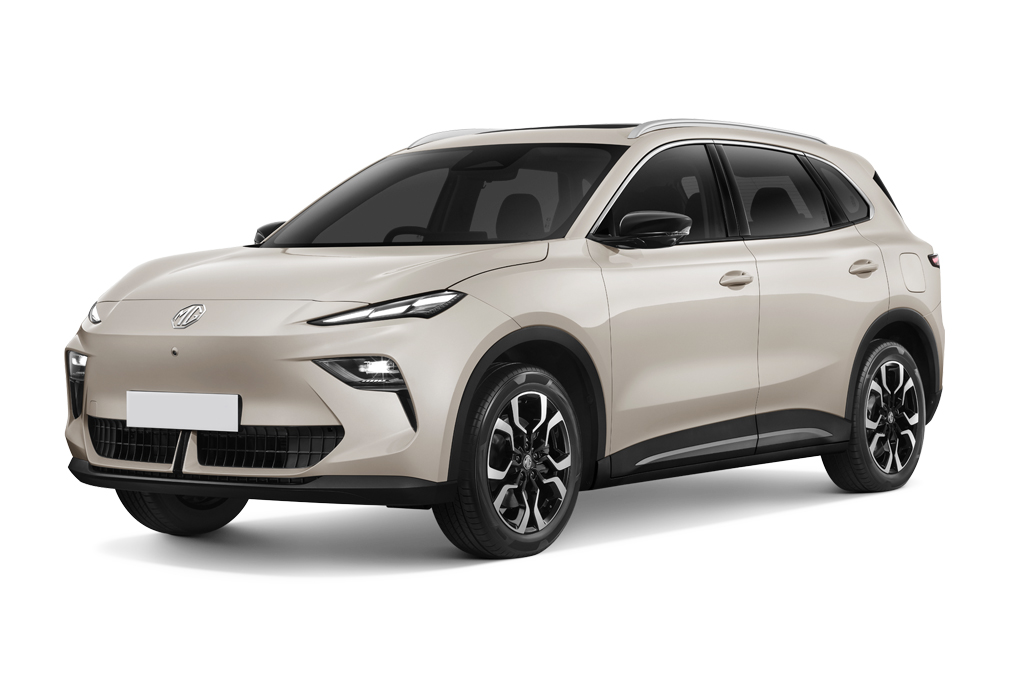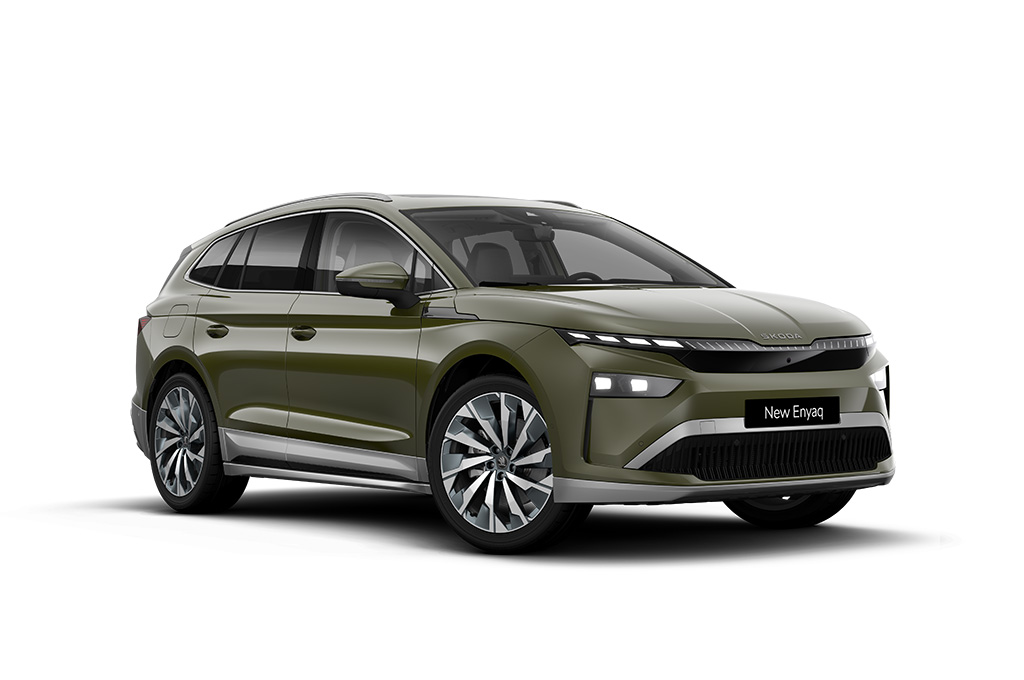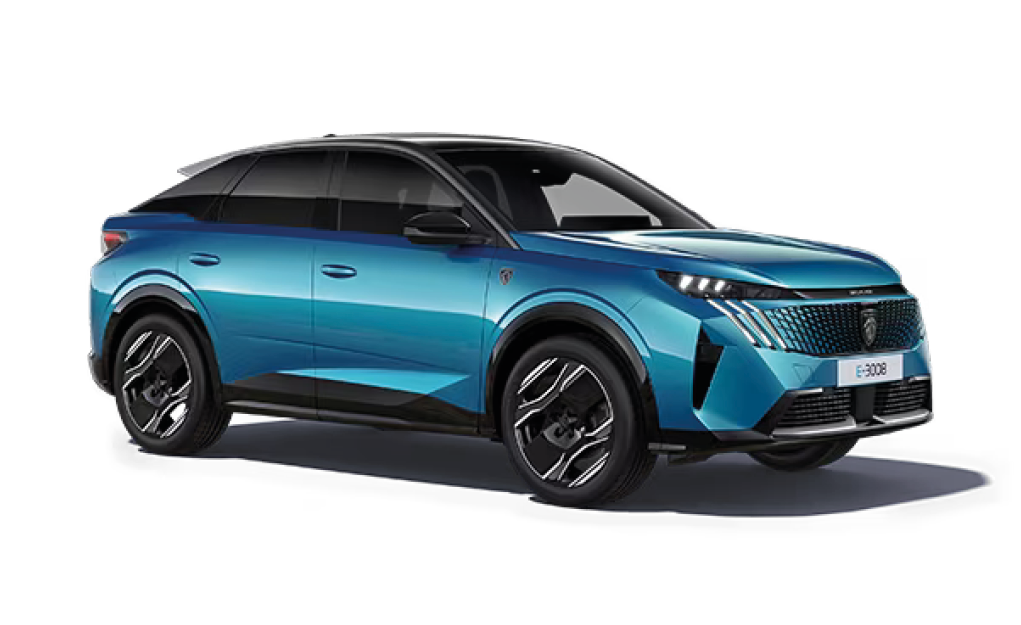Unlike the E-208 and E-2008, the E-3008 uses a brand new platform under its svelte body that has been better designed for electric power. Peugeot’s parent company, Stellantis, has also been hard at work at developing its battery technology, and the E-3008 was the first in a wave of models to get the firm’s new battery packs including a 73kWh battery that promises up to 326 miles on a full charge, and a 98kWh battery with a claimed 435-mile range. Rivals include the Tesla Model Y, Skoda Enyaq, Kia EV6, Hyundai Ioniq 5, VW ID.4, Renault Scenic, BYD Sealion 7, Citroen e-C5 Aircross, Smart #5 and more... The Peugeot E-3008 is certainly not short of competition, let's put it that way!
While this is the first battery-powered 3008, there have been two petrol and diesel powered models before it. This new one is something of a revolution in design, with slimmer headlights, distinctive ‘three-claw’ daytime running lights, and the recently redesigned Peugeot badge sitting large and proud in the grille. The biggest change is with the roofline as Peugeot has opted for a more swooping design – if you want more headroom and practicality, the seven-seat E-5008 with its squarer design should fit the bill.

In addition to coming with two battery size options, Peugeot also offers the e3008 in two and all-wheel drive forms. Launch models made do with a front-drive motor that generates 213PS, while the recently added all-wheel drive GT models get an additional boost from a 112PS motor on the rear axle. However, if you want to combine the big battery with all-wheel drive, you can’t. For reasons unknown, the all-wheel drive GT models only get the smaller 73kWh battery pack that offers a maximum WLTP range of up to 303 miles.
The interior, meanwhile, features plenty of fabric-covered surfaces and feels very plush compared to a Volkswagen ID.4, while top-spec GT cars add snazzy multi-colour ambient lighting. The E-3008 debuts Peugeot’s new ‘Panoramic i-Cockpit’ consisting of a massive 21-inch screen sitting atop the dashboard and a smaller screen for widgets and shortcuts. It looks great but the functionality is a little complex – systems found in the Renault Scenic and Skoda Enyaq are easier to use. As for space, back seat passengers will find leg and headroom a little tight, but the boot is usefully huge, and measures 588-litres with the seats up.
Our big gripe with the Peugeot is it's real-world range, which Nicola's found to be pretty poor while she's been running a long-term 73kWh Peugeot E-3008. It's also not cheap to buy, although you can get some decent lease deals, so if you're considering the Peugeot then keep an eye on our deals page in case a great offer comes up.
Check out Nicola's long-term E-3008 video and report for all the info on how she's got on while actually living with Peugeot's electric family car.
Verdict
What the E-3008 lacks dynamically, it makes up for in being hushed and quiet to drive – characteristics that will be appreciated more by families, no doubt. It’s a smartly designed electric SUV that feels very plush and upmarket inside, it’s just a shame that it’s pretty dull to drive and isn’t a cheap proposition. The E-3008 is priced towards the upper end of the family SUV segment and we’re not sure it totally justifies its price tag, so buyers looking for a great all-rounder might be best looking off elsewhere.
Read on for a more in-depth look at the range, practicality, performance and pricing.
Like the Peugeot E-3008? Try these...





